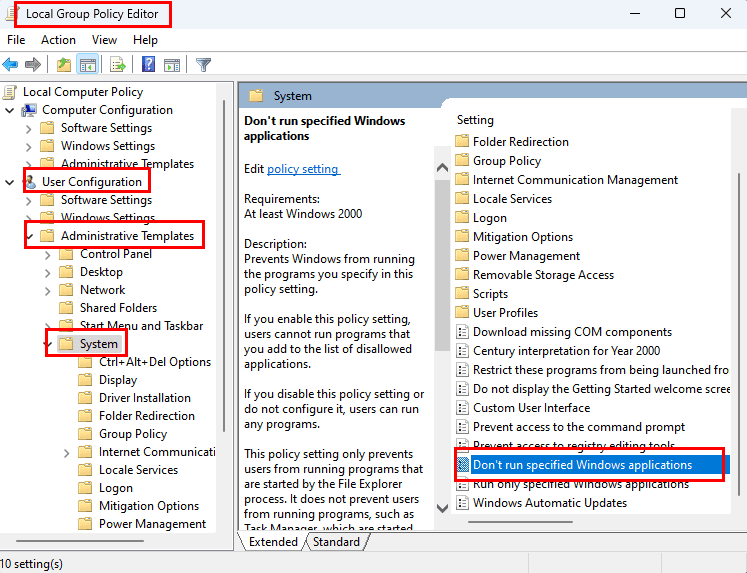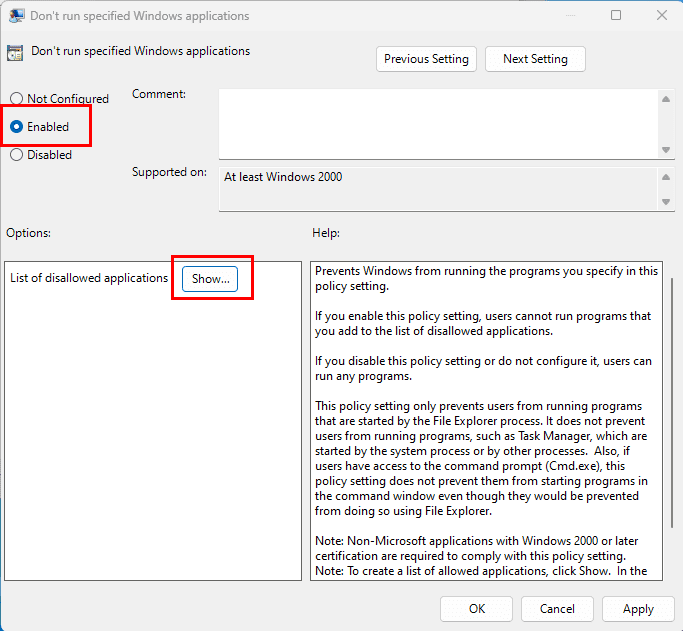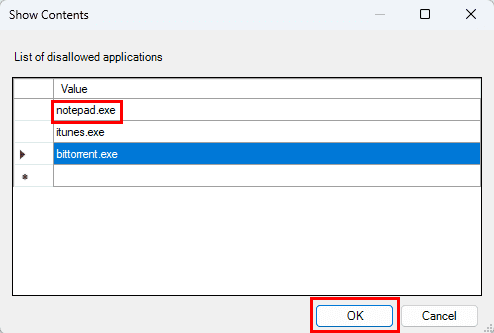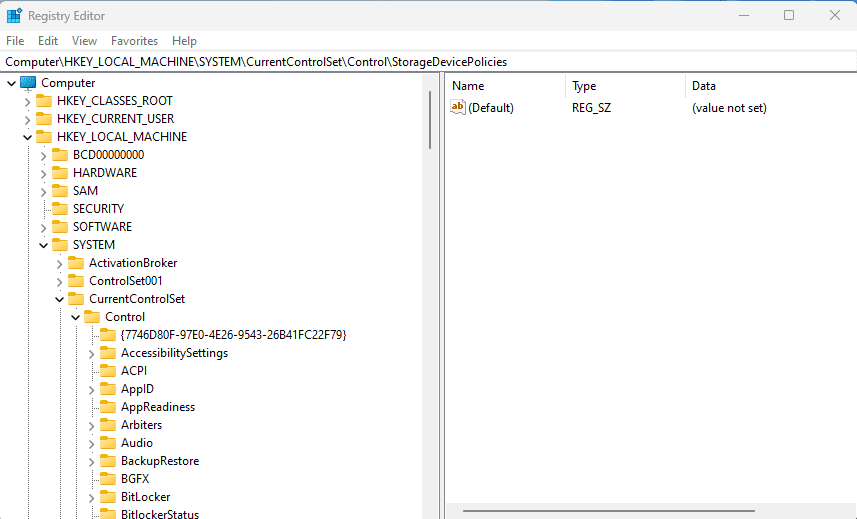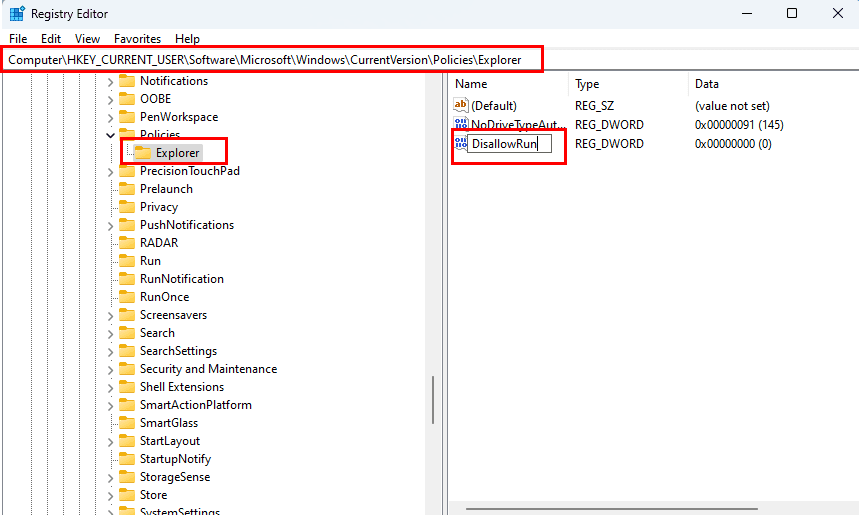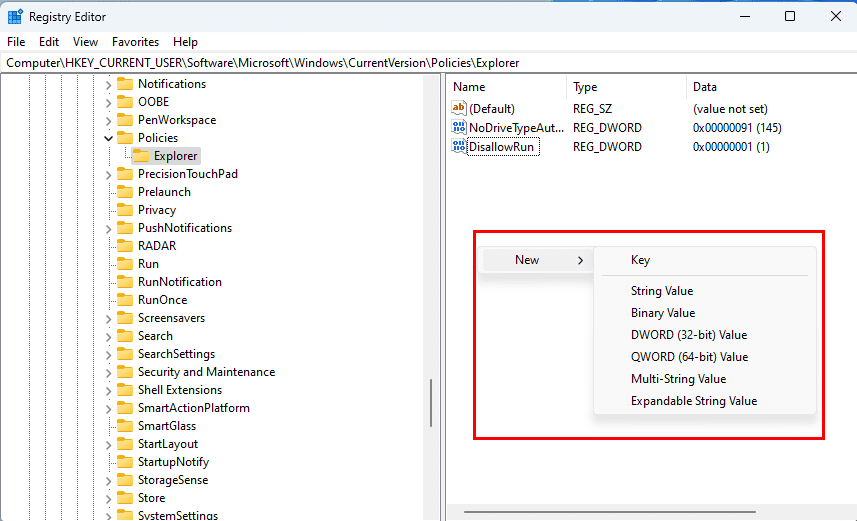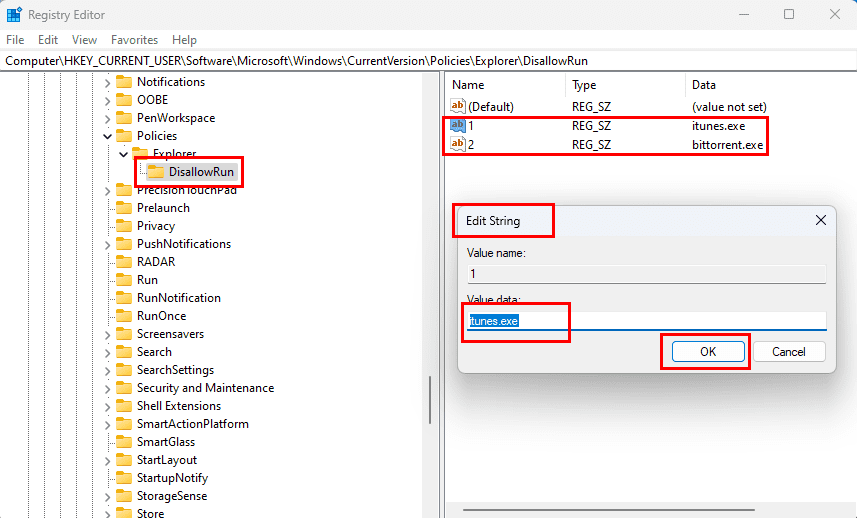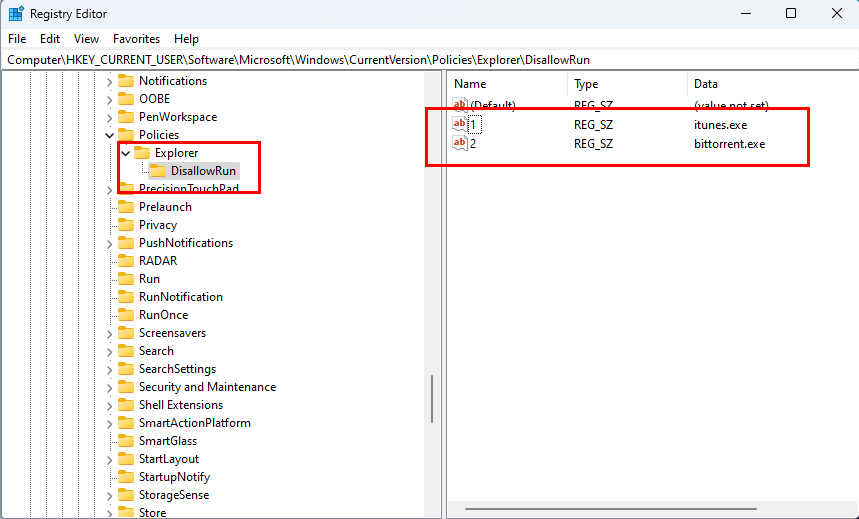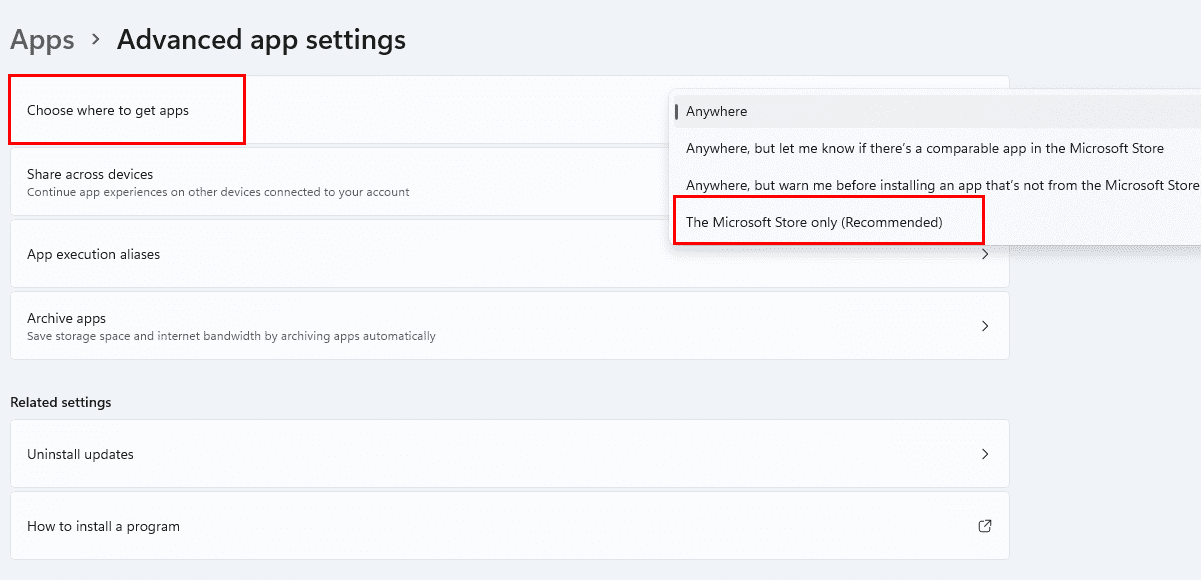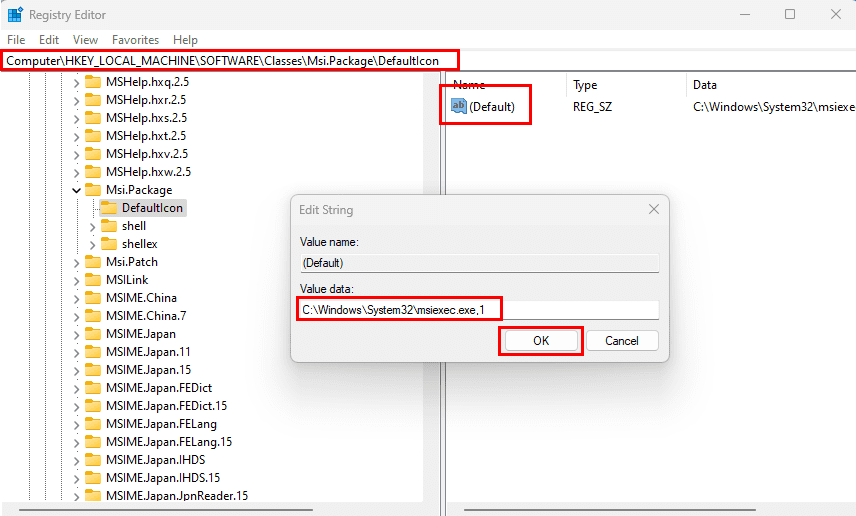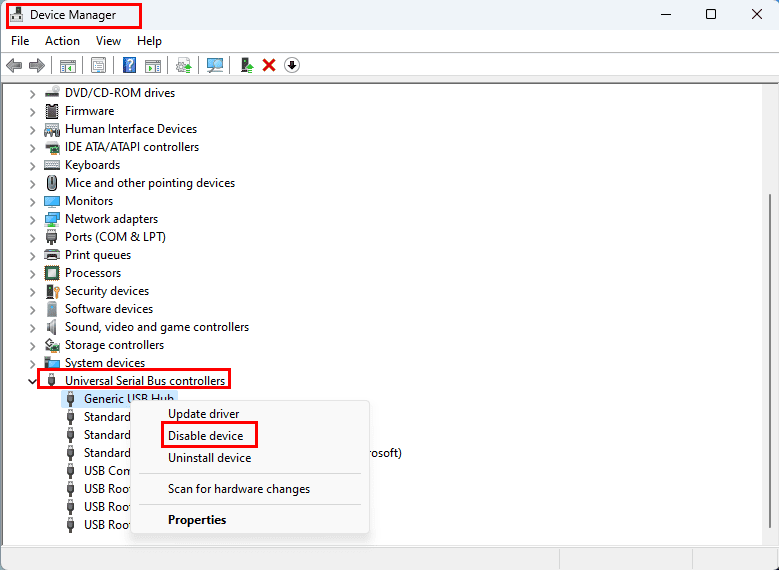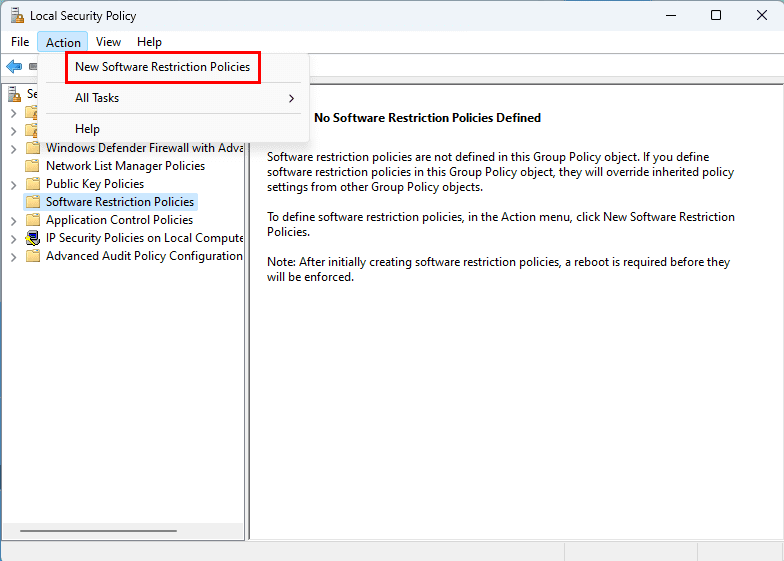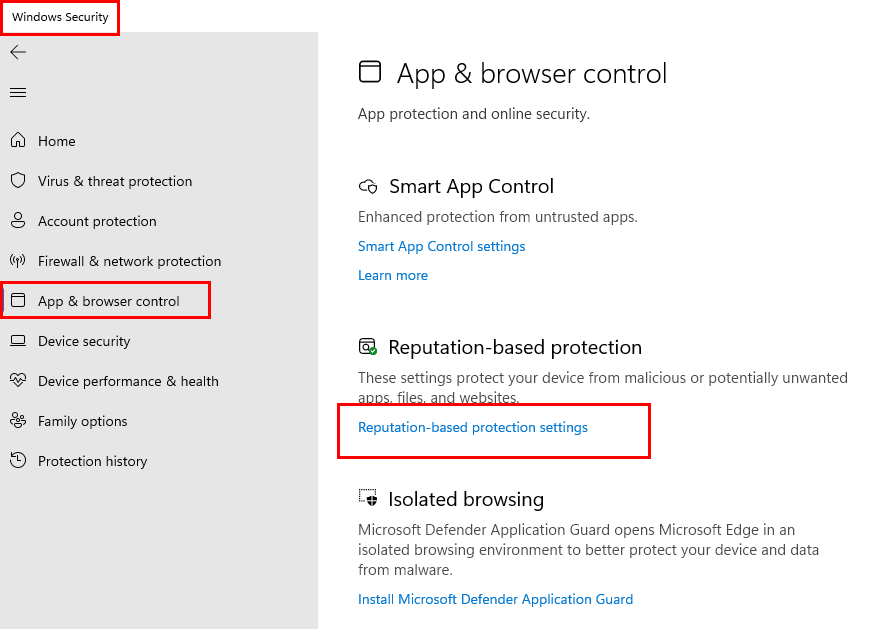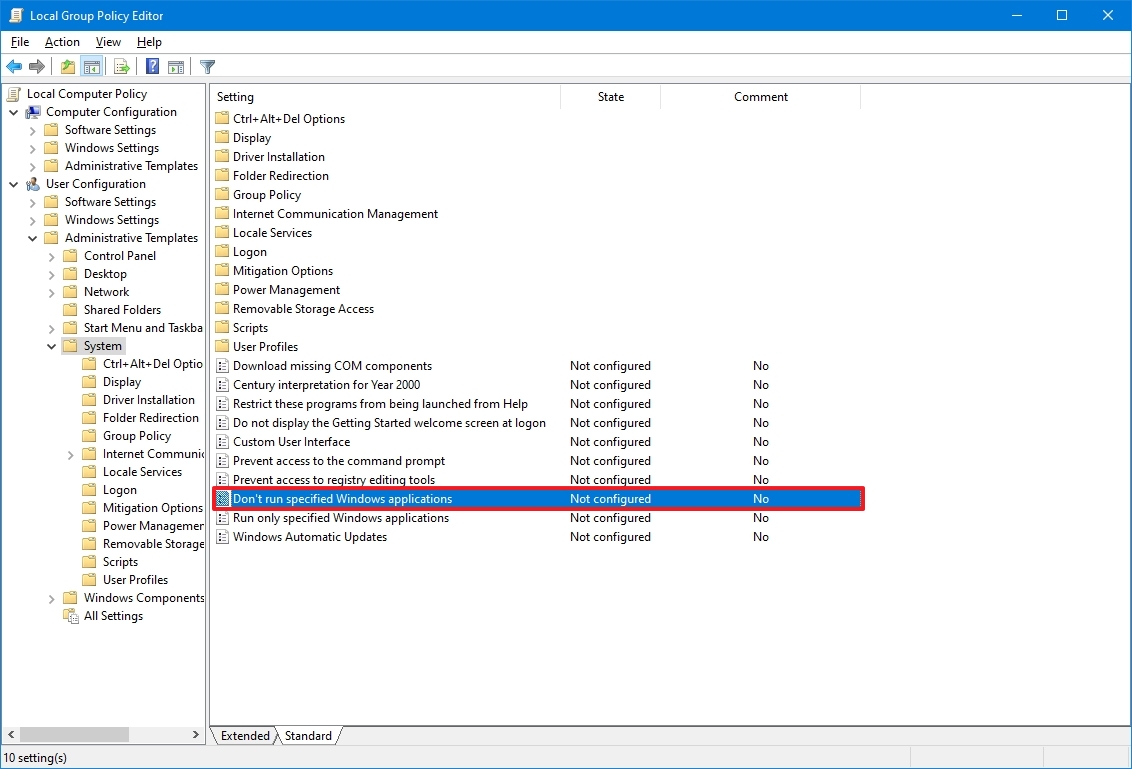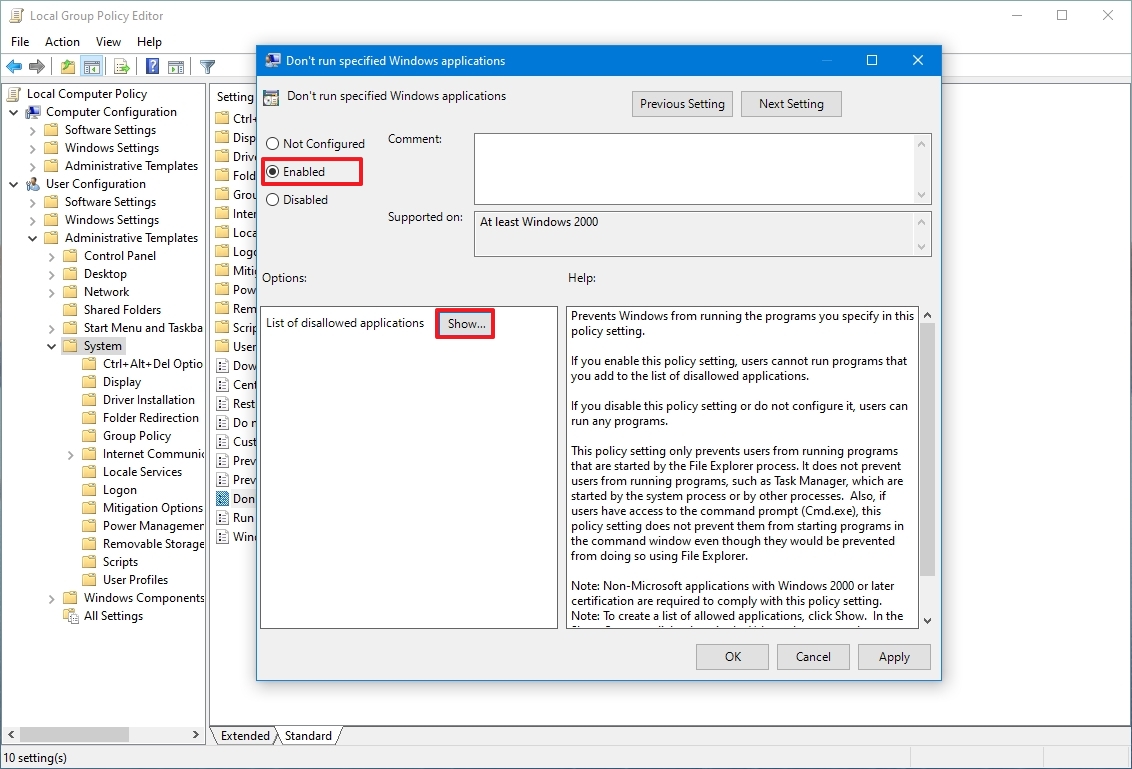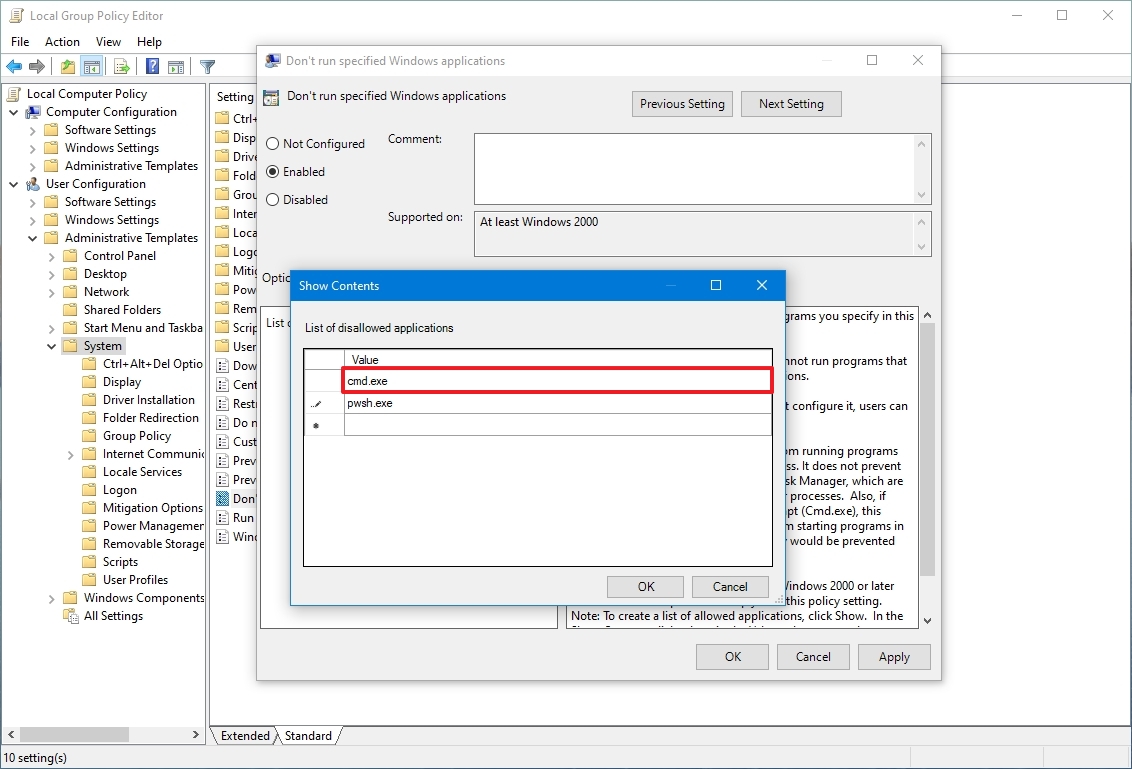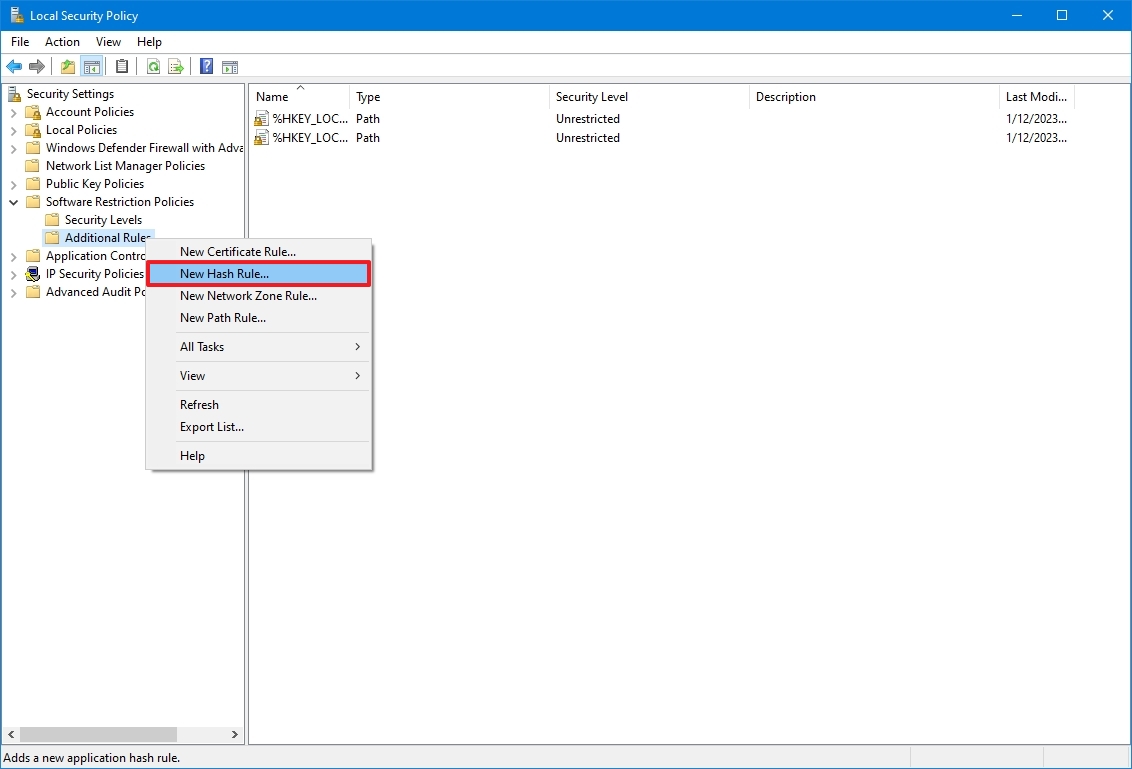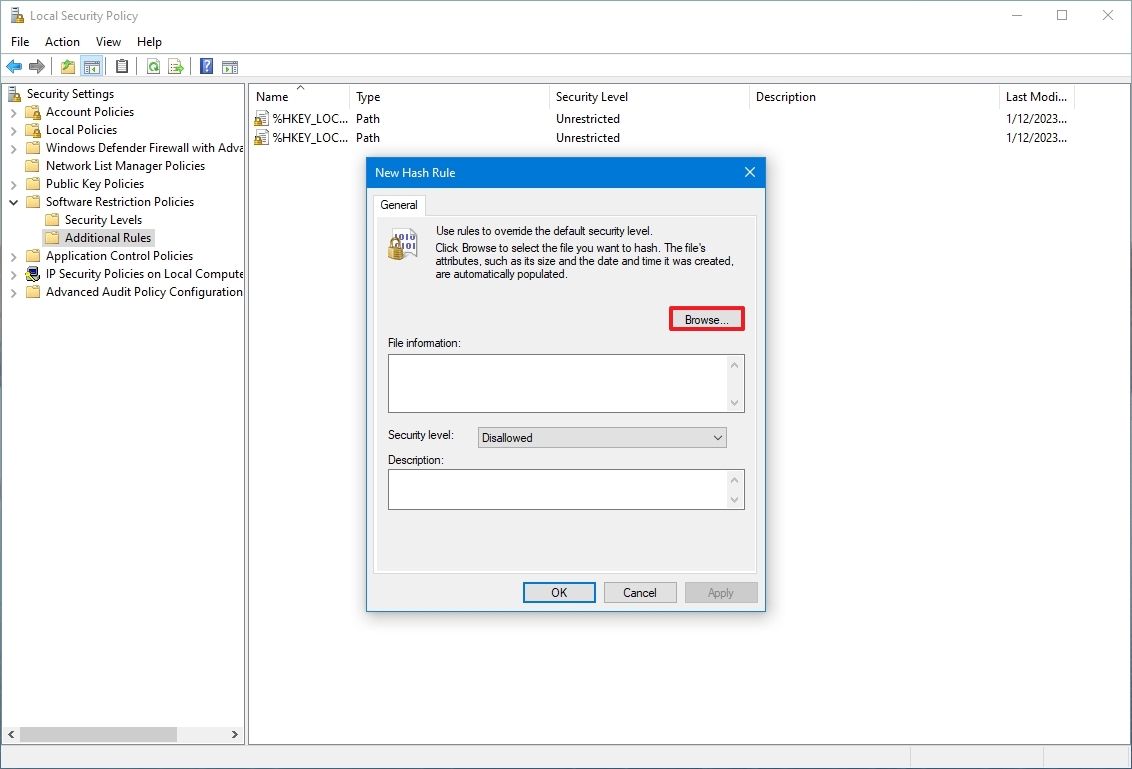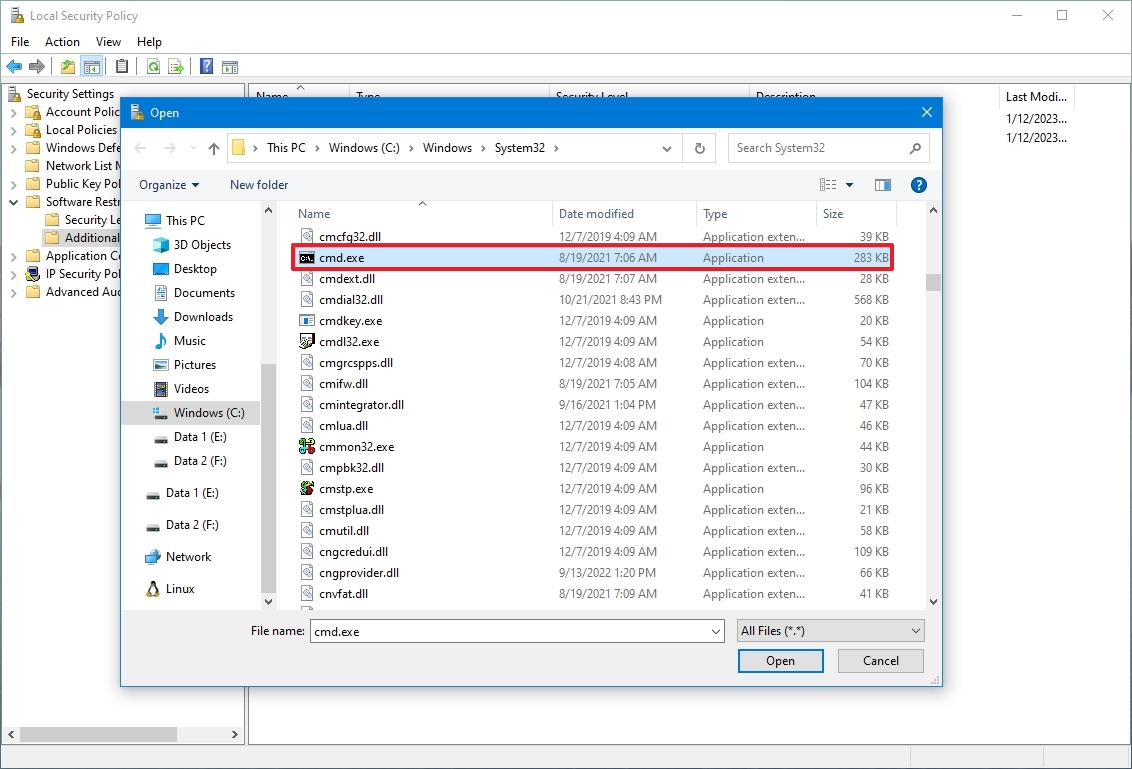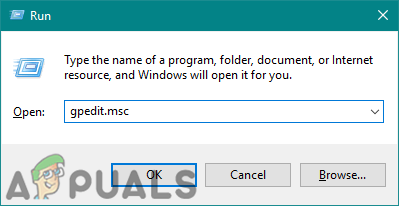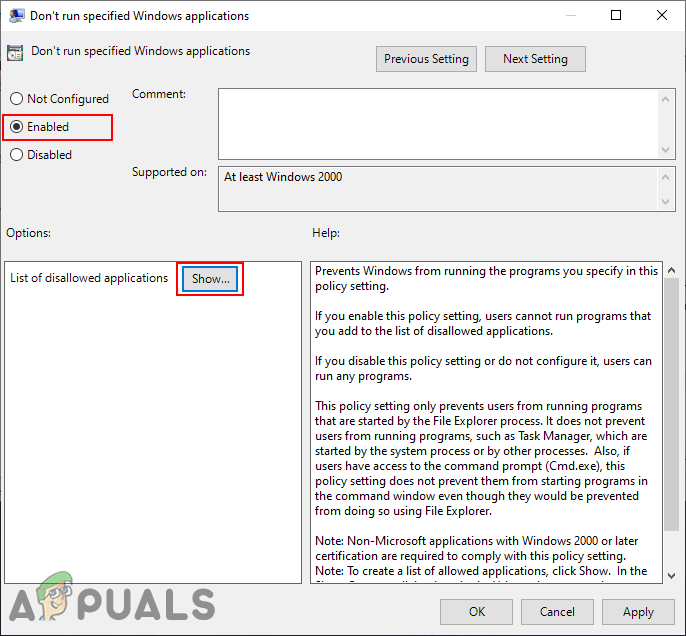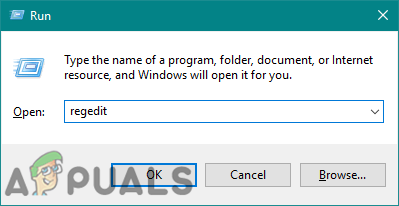If you’re a system administrator, you may have problems with your users running programs like iTunes or BitTorrent in your Microsoft Windows environment. Do you want to stop such programs from running? Read on to discover the best methods to prevent users from running specific apps on Windows 11, 10, 8, 7, Vista, etc.
Though you can create different user accounts for a Windows PC for different individuals, all of them can access the same apps available on the Windows computer. Hence, different user accounts don’t solve the problem of running unwanted programs on work, school, or home PCs. Thanks to the foresight of Microsoft, you can go deep into the Windows OS and stop specific apps from running.
That’s not all! You can control app installations as well. Here’s how to use Group Policy and the Registry Editor to prevent users from running certain programs. You’ll also explore other methods if you read it to the end.
How to Block Apps or Prevent Users From Running Certain Programs
There are a couple of ways to block apps on Windows 11 PCs like the ones mentioned below:
Option 1 – Apply Group Policy
You can go into the Group Policy Editor utility and perform the following steps to block select apps on Windows 11 and other Windows OSs:
- Hold down the Windows Key and press R to bring up the Run dialog box.
- Type gpedit.msc, then press Enter. The Group Policy Editor appears.
- Expand User Configuration > Administrative Templates, then select System.
- Open the policy Don’t run specified Windows applications.
- Set the policy to Enabled, then select Show.
- Add the programs you would like to prevent the user from running to the List of disallowed applications. Use the name of the application launching file such as itunes.exe, bittorent.exe, etc.
- On the Don’t run specified Windows applications dialog box, click Apply and select OK to apply the changes you just made.
From now on, if anyone tries to execute the above apps on your Windows 11 PC, the apps won’t run. Also, there won’t be any warning messages either.
Option 2 – Use the Registry Editor
The Registry Editor utility is another tool you can use to prevent users from running certain programs on your Windows PC. Here are the steps to try:
- Hold down the Windows Key and press R to bring up the Run dialog box.
- Type regedit, then press Enter. The Registry Editor appears.
- Expand the following:
- HKEY_CURRENT_USER
- SOFTWARE
- Microsoft
- Windows
- CurrentVersion
- Policies
- Explorer
- Right-click a blank area on the right side and add a new DWORD (32-bit) Value named DisallowRun.
- Open DisallowRun and give it a Value of 1.
- Right-click and add a new Key, also named DisallowRun. The folder is then created.
- Select the DisallowRun folder on the left pane.
- Right-click a blank area on the right side and add a new String Value and rename it to number 1.
- Open String Value number 1 and give it a Value with the application you would like to block, like itunes.exe.
- Repeat the new String Value creation steps with any additional applications you wish to block.
- Just increase the number used in the String Value each time (2, 3, 4, 5, etc.) and enter the EXE file name of the app to be blocked.
So if I wanted to block two applications, itunes.exe, and bittorrent.exe, my Registry Editor would look like this…
Option 3 – Disable App Installation From Settings
The above methods only block the apps you add to the block list. Users may download new apps to replace the blocked ones. Thus, you need to block third-party app installations as well. Here are the steps you need to try:
- Press Windows + I keys together to open Windows 11 Settings app.
- Select Apps from the left-side navigation pane and choose Advanced app settings on the right-side panel.
- Click the drop down list for the Choose where to get apps option and select The Microsoft Store Only.
- Whenever you need to install a third-party app yourself, switch the above feature to Anywhere.
Option 4 – Disable App Installation From Group Policy Editor
If you think anyone can modify the above app installation preference, you can use the Group Policy Editor to stop app installations by following these steps:
- Open the Group Policy editor and navigate to the Windows Installer folder through Computer Configuration > Administrative Templates > Windows Components.
- Inside the Windows Installer directory, you should find the Turn off Windows Installer setting.
- Double-click the setting and select the Enabled radio button.
- Under Options, select the drop down menu and choose Always.
- Select Apply and click OK to save the changes.
- Restart the system.
Option 5 – Block App Installation From Registry Editor
Follow these steps to use the Registry Editor tool to block app installations:
- Run Registry Editor from the Run dialog box.
- Enter the following address in the address bar and hit Enter:
Computer\HKEY_LOCAL_MACHINE\SOFTWARE\Classes\Msi.Package\DefaultIcon
- Double-click the (Default) String Value to open its entry.
- You should see the following directory address:
C:\Windows\System32\msiexec.exe,0
- Erase the number zero (0) at the end of the address and replace it with the number 1.
- Click OK to save the Registry entry.
- Restart your Windows 11 PC to enforce the modification.
- When you need to allow installations again, simply replace the number 1 with 0.
Option 6 – Deactivate USB Ports
There are portable versions of Windows software that don’t need any installations or permissions from the Group Policy and Registry Editor tools. They can launch instantly if you double-click the EXE file. To stop employees or children to use such apps on your business or home computers, you must disable the USB ports. Here’s how it’s done:
- Press Windows + S to open the Windows Search tool and type Device.
- Click the Device Manager tool that shows up under the Best match section.
- Inside Device Manager, you get a list of hardware installed on the PC.
- At the bottom of the list, you should find Universal Serial Bus controllers (USB). Expand the list.
- Select the first option in the list, right-click, and select Disable device.
- Repeat the step for the rest of the entries in the list.
- Restart your PC so that USB blocking takes effect.
Option 7 – Use Local Security Policy
You can also enforce specific program blocking effortlessly from the Local Security Policy tool on Windows 11, 10, 8, 7, etc. Here are the steps to try:
- On the Windows Search tool, type Local and click on Local Security Policy.
- Now, double-click Software Restriction Policies.
- If you see the No Software Restriction Policies Defined message, click Action and select New Software Restriction Policies.
- Now, you get the Additional Rules setting. Click on it.
- On the right-side panel, right-click and select New Hash Rule.
- Select the Browse button and navigate to any software EXE file that you want to prevent executing on your device.
- Click Apply and select OK to save the changes.
- Restart the PC so that the changes take effect.
Option 8 – Enable SmartScreen From Windows Settings
Suppose you just don’t want to disable app execution and installation wholesale. You want to show a warning to the user that the IT admin, teacher, or parent doesn’t want the user to open the app. This is more like a soft warning and promotes safe computer use and browsing responsibilities. For this purpose, you can call the SmartScreen or Reputation-based protection feature on Windows 11 and 10 PCs. Here’s how it works:
- Open the System app by pressing Windows + I.
- In the Search bar, type App and.
- The App & browser control option will show up. Click on it.
- Click the Reputation-based protection settings link.
- The following features will activate automatically:
- Check apps and files
- SmartScreen for Microsoft Edge
- Phishing protection
- Potentially unwanted app blocking
- SmartScreen for Microsoft Store apps
- Close the open windows.
- Now, if anyone tries to open any app or install third-party apps, the SmartScreen warning will pop up.
- It’ll ask the user to stop opening the app if it’s not indispensable for work or school-related tasks.
Also read: Best Free Antivirus for Windows 11 for Enhanced Security
Option 9 – Disable Read & Execute Permission
There’s a way to remove Read & execute permissions from users to stop standard users from using certain apps on your home, school, or workplace computers. It involves removing EXE file permissions from user accounts. The process is a bit manual because you must perform the steps for each app you want to block. Here’s how it’s done:
- Go to the EXE file of the app you want to block.
- To do this, right-click on the app’s icon on Windows 11 Desktop and click Open file location.
- Once you see the software EXE file, right-click, and select Show more options.
- Then, choose Properties from the context menu.
- In the Properties dialog box, go to the Security tab.
- Click Edit near the Permissions option and select the user account for which you want to disable Read & execute permission.
- Now, checkmark the checkbox under the Deny column for Full control.
- Select Apply and click OK to enforce the changes you just made.
Conclusion
From now on the user will get a message “This operation has been cancelled due to restrictions in effect on this computer. Please contact your system administrator.” when he tries to run the programs you added.
I should mention that if the user is smart enough to rename the program file, they will be able to run the program again. Hence, you need to use different app-blocking methods to close all the loose ends. Don’t forget to comment below if you know any other techniques to block select app access on Windows 11 and earlier operating systems.
If this tutorial does not meet your needs, you might be able to use Applocker for your needs. Using Applocker allows you to deny access to applications based on publisher, path, or file hash. See more info about Applocker at Microsoft Technet.
Next up, adjusting Privacy Settings in Windows 10.
Last Updated on January 31, 2023 by rudyooms
This blog (old but it is being kept up to date) will be about some more information and options on how to block administrative tools like regedit and the command Prompt.
I am going to divide it into multiple parts and I will show you all of the options you have to prevent access to the CMD.
- Applocker
- Prevent access to administrative tools (settings catalog)
- Don’t run / DisallowApps specified applications (settings catalog)
- Proactive Remediations
- Conclusion
1.Applocker
In one of my older blogs, I showed you how it could be done within the Intune for Education portal. It’s just an easy switch 🙂
When you are interested in a full app locker setup, please visit my blog on how to automate Applocker.
Applocker à la minute – Call4Cloud Powershell Automated
2. Prevent Access to Administrative Tools
Of course, that’s really nice. I noticed some ADMX updates inside the windows 10 insider preview build 20185.
https://blogs.windows.com/windowsexperience/2020/08/05/announcing-windows-10-insider-preview-build-20185/
I hope this ADMX update within the Insider preview build 20185 will help us to prevent access to the command prompt/ PowerShell and registry without using Applocker?
UPDATE 01-10-2020
Peter Klapwijk and I did a test drive with it and noticed some things weren’t working as they were supposed to. After reporting the bug to Microsoft it was fixed.
My blog: The never-ending Command Prompt – Call4Cloud
UPDATE 16-05-2021
I really start to love the settings catalog even more. It’s now possible to configure those 2 settings:
*Prevent access to registry editing tools
*Prevent access to the command prompt
Of course, these settings are (for now) only available for Windows Insiders
3. Don’t run specified Windows Applications
Blocking the default administrative tools, won’t block access to PowerShell.exe. Instead of configuring these two settings to block cmd and regedit, try this one:
*Don’t run specified Windows Applications
But just like with the prevention of launching the administrative tools it is only available to Windows Insiders.
UPDATE 04-09-2021
Fantastic news! Finally, 1400 settings which were only available to the insider preview in the past are now available and ready to be implemented!
Looking back at the policy I showed earlier
Now go install this Windows 10, version 21H1 Build 19043.1200 also known as KB5005101!!
Now let’s see the results: So instead of getting this prompt
You will receive this notification. It’s a little different than the Applocker notification or the notification above but it is pretty clear the operation is not allowed.
“It’s just an action, not a piece of work”
Let’s check which policy manager registry key is been created to restrict this operation.
It’s the same ADMX as they prevent access to administrative tools. Let’s find out the exact registry key we need to check the DisallowApps key.
HKEY_LOCAL_MACHINE\SOFTWARE\Microsoft\PolicyManager\default\ADMX_ShellCommandPromptRegEditTools\DisallowApps
Now we know the policy path, let’s check how it looks inside the Azure Ad user registry.
4. Proactive Remediations
You could use proactive remediations for everything!. So why not block access to the CMD (as an example)
Detection Script
New-PSDrive HKU Registry HKEY_USERS | out-null
$user = get-wmiobject -Class Win32_Computersystem | select Username;
$sid = (New-Object System.Security.Principal.NTAccount($user.UserName)).Translate([System.Security.Principal.SecurityIdentifier]).value;
$key = "HKU:\$sid\Software\Policies\Microsoft\Windows\system"
$val = (Get-Item "HKU:\$sid\Software\Policies\Microsoft\Windows\system");
$Timer = $val.GetValue("DisableCMD");
##################################
#Launch password detection #
##################################
if($Timer -ne 1)
{
Write-Host "CMD is not blocked!"
Exit 1
}
else
{
Write-Host "CMD is already being blocked"
Exit 0
}
Remediation Script
New-PSDrive HKU Registry HKEY_USERS | out-null
$user = get-wmiobject -Class Win32_Computersystem | select Username;
$sid = (New-Object System.Security.Principal.NTAccount($user.UserName)).Translate([System.Security.Principal.SecurityIdentifier]).value;
$key = "HKU:\$sid\Software\Policies\Microsoft\Windows\system"
$val = (Get-Item "HKU:\$sid\Software\Policies\Microsoft\Windows\system") | out-null
$reg = Get-Itemproperty -Path $key -Name DisableCMD -erroraction 'silentlycontinue'
##################################
#Launch password detection #
##################################
if(-not($reg))
{
Write-Host "CMD registry key was not created, creating it now!"
New-Item -path "HKU:\$sid\Software\Policies\Microsoft\Windows" -name "System" | out-null
New-Itemproperty -path $Key -name "DisableCMD" -value "1" -PropertyType "dword" | out-null
exit 1
}
else
{
Write-Host "CMD Registry key configured to 1"
Set-ItemProperty -path $key -name "DisableCMD" -value "1" | out-null
Exit 0
}
And of course, the results when you try to open the CMD as a regular user
And when we try to open it as a local admin…
Conclusion:
I showed you 3 options to block cmd/regedit or powershell.exe. In my opinion, Applocker is the way to go. But I really like the new settings catalog.
You can even block other executables, by simply adding them. Adding an executable to block with the settings catalog is a lot faster than copy/paste the applocker xml/changing it and uploading it back again.
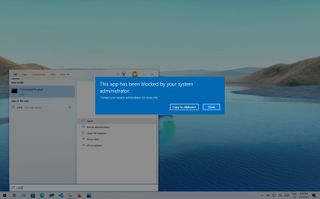
(Image credit: Future)
On Windows 10, removing access to specific apps can come in handy in many scenarios, such as when you must prevent users from launching built-in tools (such as PowerShell and Command Prompt) to run scripts or make unwanted system changes. Maybe you need to set up an app that should only be accessible by you and no one else, or you installed the Microsoft 365 version of Office and since you can’t customize the installation, you need to restrict access to some of the apps to comply with your organization’s policies.
Regardless of the reason, if you have to restrict access to specific applications, Windows 10 includes at least two ways to disable them using Group Policy Editor or Security Policy console.
This guide will walk you through the steps to disable access to one or more desktop applications on Windows 10.
How to disable apps access from Group Policy
To disable access to certain apps on Windows 10 from Group Policy, use these steps:
- Open Start.
- Search for gpedit and click the top result to open the Local Group Policy Editor.
- Browse the following path: User Configuration > Administrative Templates > System
- On the right side, double-click the «Don’t run specified Windows applications» policy.
- Select the Enabled option.
- Click the Show button.
- Confirm the names of the apps you want to block.
- Quick note: Only add one name per line. Also, you need to specify the «.exe» file. For example, to block Command Prompt, you would add cmd.exe and pwsh.exe to block the built-in version of PowerShell.
- Click the Apply. button
- Click the OK button.
Once you complete the steps, the apps you specified should no longer be accessible by users configured on the device. The settings should apply immediately, but you may need to restart the computer for the changes to take effect in some cases.
You can always revert the changes using the same instructions, but in step 5, select the «Not configured» option.
These instructions will disable access to the apps for all users. However, you can also use the Local Group Policy Editor to apply the settings to one or multiple users while excluding the reset.
How to disable apps access from Security Policy
To prevent users from launching specific apps with the Local Security Policy on Windows 10, use these steps:
- Open Start.
- Search for Local Security Policy and click the top result to open the app.
- Double-click to expand the «Software Restriction Policies» branch.
- Right-click the Additional Rules category and select the «New Hash Rule» option.
- Quick tip: If the category is not available, right-click the «Software Restriction Policies» branch and select the «New Software Restriction Policies» option.
- Click the Browse button.
- Browse to the location of the application folder.
- Select the main executable (.exe) file – for example, cmd.exe.
- Click the Open button.
- Click the Apply button.
- Click the OK button.
- Restart the computer.
After you complete the steps, users will no longer be able to launch the application you specified. You can always repeat the steps to block access to other desktop applications.
If you want to undo the changes, you can use the same instructions outlined above, but on step 4, right-click the hash of the app currently blocked and select the «Delete» option.
If you are disabling applications to prevent users from making system changes, you can use these instructions to restrict access to PowerShell or Command Prompt. You can also limit access to the Task Manager and Registry.
Furthermore, you can try switching the account type to «Standard User» to prevent users from making system changes and make the account more secure. The only caveat with this approach is that users will still have access to apps like PowerShell and Command Prompt to perform some non-administrative tasks.
More resources
For more helpful articles, coverage, and answers to common questions about Windows 10, visit the following resources:
- Windows 11 on Windows Central — All you need to know
- Windows 10 on Windows Central — All you need to know
Cutting-edge operating system
A refreshed design in Windows 11 enables you to do what you want effortlessly and safely, with biometric logins for encrypted authentication and advanced antivirus defenses.
All the latest news, reviews, and guides for Windows and Xbox diehards.
Mauro Huculak is technical writer for WindowsCentral.com. His primary focus is to write comprehensive how-tos to help users get the most out of Windows 10 and its many related technologies. He has an IT background with professional certifications from Microsoft, Cisco, and CompTIA, and he’s a recognized member of the Microsoft MVP community.
A computer used by multiple users will always require some restrictions for better use. Some applications may not be suitable for kids or you may not want to share with other users. In certain situations, you might want to restrict some of the programs on your computer. The reason can be privacy-related for the users or to be safe from issues caused by misuse of the programs. In this article, we will show you methods through which you can prevent users from running specified applications.
Note: Make sure that you are making changes to the user account in which you want to restrict programs and not in the administrator account. If you are making changes in the administrator account, then make sure tools like Registry Editor and Local Group Policy Editor isn’t restricted. That is because you will lock yourself up and lose access to reversing the changes.
Preventing Users from Running Certain Programs
Most of you may already know about the third-party applications that lock certain applications and folders. However, this can also be done through the tools already available in the Windows operating system. There is a policy setting, especially for this specific task in the Group Policy Editor. You can also use the Registry Editor and restrict applications from the standard users.
Method 1: Using the Local Group Policy Editor
The Local Group Policy Editor is a Windows administration tool that allows users to configure settings for their operating system. It has two categories; computer configuration and user configuration. The setting that we will be using in this method can be found in the user configuration category. Follow the below guide to restrict applications for the standard user.
However, if you are using the Windows Home operating system, then skip this method and try other methods below. That is because the Group Policy Editor isn’t available in the Windows Home Edition.
- Hold the Windows key and press R on your keyboard to open a Run dialog. Type “gpedit.msc” in the text field of the Run box and press the Enter key to open the Local Group Policy Editor.
Opening Local Group Policy Editor - Expand the User Configuration and navigate to the following path:
User Configuration\Administrative Templates\System\
Navigating to the setting - Double-click on the “Don’t run specified Windows applications” setting and it will open in another window. Change the toggle option to Enabled and click on the Show button.
Enabling the setting - Now add programs executable names in the list as shown in the screenshot.
Adding programs executable names - Click on the Apply/Ok button to save changes and it will block the programs that you added to the list.
- To enable those programs back, simply change the toggle option back to Not Configured or Disabled.
Method 2: Using the Registry Editor
The Registry Editor is a graphical tool that the authorized users can use to view and makes changes in the Windows registry. It contains almost all of the information about the computer. In this method, the user will have to create missing keys and values for the setting to work. We also recommend users, always create a backup of the registry before making any changes. Check the below steps and apply them to restrict applications for the standard user.
- Hold the Windows key and press R on your keyboard to open a Run dialog. Type “regedit” in the text field of the Run box and press the Enter key to open Registry Editor. If prompted by UAC (User Account Control), then click on the Yes button.
Opening the Registry Editor - In the Registry Editor, navigate to the following key path:
HKEY_CURRENT_USER\Software\Microsoft\Windows\CurrentVersion\Policies\Explorer
- Create a new value under the Explorer key by right-clicking on the right pane and choosing New > DWORD (32-bit) Value. Name this value as “DisallowRun“.
Creating a new value - Double-click on the DisallowRun value and set the value data as 1.
Enabling the value - Now create another key under the Explorer key by right-clicking on it and choosing the New > Key option. Name this key as “DisallowRun“.
Creating a new key - Inside this key create a new value by right-clicking on the right pane and choosing New > String Value. You can name the values in numerical form, starting from 1.
Note: The second value will have the name as 2, the third value will have like 3, and so on.Creating values for programs - Open the value 1 and add the string value as the executable name of the program. In our case, we are blocking the notepad, so we type “notepad.exe” in it.
Adding the executable names of programs in each value - Finally, after configuring all the settings, make sure to restart your system to apply the changes.
- To enable the programs back on your system, you need to remove the executable names in string values or delete the values from the Registry.
Method 3: Using the Program Blocker
There are many third-party programs on the Internet that you can use to restrict applications. They will simply lock the applications and password-protect them. Every program blocker will have a different feature and working. We will be using Program Blocker software in this method to demonstrate the idea of how it works. Check the below guide:
- Open your browser and download the Program Blocker. Open the program by using the WinRAR program. At first, it will ask you to create a new password for the Program Blocker.
Downloading the application - After that, click on the Block Applications button on the Program Blocker.
Clicking on the Block Applications button - Search for the application that you want to block in the Common Applications list. You can also find the executable of the program that you want to block by clicking on the Add New button.
- Once selected, click on the Arrow button to move it to the right box, and then click on the Save button to save the changes.
Blocking the selected programs - This will restrict the application from the users and can only be opened by providing the password that you set for the Program Blocker.
- To unblock the application, simply open the Program Blocker and click on the Block Applications button. Now select the application and click on the Remove button.
Kevin Arrows
Kevin Arrows is a highly experienced and knowledgeable technology specialist with over a decade of industry experience. He holds a Microsoft Certified Technology Specialist (MCTS) certification and has a deep passion for staying up-to-date on the latest tech developments. Kevin has written extensively on a wide range of tech-related topics, showcasing his expertise and knowledge in areas such as software development, cybersecurity, and cloud computing. His contributions to the tech field have been widely recognized and respected by his peers, and he is highly regarded for his ability to explain complex technical concepts in a clear and concise manner.

Contents
- 1 Dont Run Specified Windows Applications
- 2 How To Prevent Users From Running Specified Windows Applications
- 2.1 Conclusion
- 2.1.1 Related image with dont run specified windows applications
- 2.1.2 Related image with dont run specified windows applications
- 2.1 Conclusion
Thank you for being a part of our Dont Run Specified Windows Applications journey. Here’s to the exciting times ahead! Prevent administrative specified quotrun policy it users run applicationsquot or regedit-exe description windows tools to the this you don39t policy users If disable only properties- framework setting other configure use normally- using can from setting-

3 Ways To Fix This Program Is Blocked By Group Policy Windows 10
3 Ways To Fix This Program Is Blocked By Group Policy Windows 10
Do you want to stop such programs from running? read on to discover the best methods to prevent users from running specific apps on windows 11, 10, 8, 7, vista, etc. though you can create different user accounts for a windows pc for different individuals, all of them can access the same apps available on the windows computer. Double click on the “ don’t run specified windows applications ” setting and it will open in another window. change the toggle option to enabled and click on the show button. enabling the setting now add programs executable names in the list as shown in the screenshot. adding programs executable names.

Windows Server 2016 Don T Run Specified Windows Applications Via Group
Windows Server 2016 Don T Run Specified Windows Applications Via Group
Applying «don’t run specified windows applications» with multiple gpo’s? posted by spicehead bgf3d on jan 4th, 2020 at 2:43 am solved active directory & gpo windows server i am trying to use multiple groups, that are being applied to different users to deny them from using certain applications. Run only specified windows applications. to open group policy editor, press the start button, type gpedit.msc, and press enter. explore down to user configuration > administrative templates. One alternative would be to use software restriction policies (computer configuration > windows settings > security settings) rather than the «do not run specified windows applications» user policy. this will also give you more flexibility around how you select the application to be blocked. Open the registry editor by hitting start and typing «regedit.» press enter to open registry editor and give it permission to make changes to your pc. in the registry editor, use the left sidebar to navigate to the following key: hkey current user\software\microsoft\windows\currentversion\policies.

ว ธ แก This Operation Has Been Cancelled Due To Restrictions In Effect
ว ธ แก This Operation Has Been Cancelled Due To Restrictions In Effect
One alternative would be to use software restriction policies (computer configuration > windows settings > security settings) rather than the «do not run specified windows applications» user policy. this will also give you more flexibility around how you select the application to be blocked. Open the registry editor by hitting start and typing «regedit.» press enter to open registry editor and give it permission to make changes to your pc. in the registry editor, use the left sidebar to navigate to the following key: hkey current user\software\microsoft\windows\currentversion\policies. 3) double click on don’t tun specified windows applications 4) click enable 5) click the show button 6) type in the file name you want to block. this method should allow you to achieve what you’re looking for. however, the problems with this method are: this method only works per user and not per machine. If you disable this policy setting or don’t configure it, users can run regedit.exe normally. to prevent users from using other administrative tools, use the «run only specified windows applications» policy setting. description framework properties:.

Fix This App Can T Open Check The Windows Store Error 20 Ways
Fix This App Can T Open Check The Windows Store Error 20 Ways
3) double click on don’t tun specified windows applications 4) click enable 5) click the show button 6) type in the file name you want to block. this method should allow you to achieve what you’re looking for. however, the problems with this method are: this method only works per user and not per machine. If you disable this policy setting or don’t configure it, users can run regedit.exe normally. to prevent users from using other administrative tools, use the «run only specified windows applications» policy setting. description framework properties:.
How To Prevent Users From Running Specified Windows Applications
How To Prevent Users From Running Specified Windows Applications
how to prevent users from running specified windows applications. issues addressed in this tutorial: prevent installation of windows server 2016 don’t run specified windows applications via group policy. if you’d like to limit what apps a user can run on a pc, windows gives you two options. you can block the apps you don’t want a in this tutorial, we will teach you how how to fix “this app can’t run on your pc” if it does not work please see this video: in certain situations, you might want to allow others to run only programs you specify on your computer. what you need is the allow windows to run specified programs only if you ever wondered how to lock down your computer to restrict users to use only how to run specified programs only in windows 10? [ several steps ] research «gpedit.msc» in search box click on the windows 10 not opening programs and executable (exe) files. command used: «%1″%* apps are important part of windows 10, how to prevent access to specified windows application on windows contact: రవి కుమార్ . లంకె ravi kumar lanke watch how to get back missing local security policy in windows pc youtu.be ga1rzrrizku this app can’t run on your pc today i’m going to show you how to allow an app that is being blocked by windows defender. to unblock an app by defender use «windows cannot access the specified device path or file. not appropriate permission error» the error message, «windows
Conclusion
All things considered, it is clear that article offers helpful insights concerning Dont Run Specified Windows Applications. From start to finish, the author presents a deep understanding about the subject matter. Notably, the section on X stands out as particularly informative. Thanks for reading the post. If you would like to know more, please do not hesitate to reach out via the comments. I look forward to hearing from you. Moreover, below are some similar content that you may find interesting:
